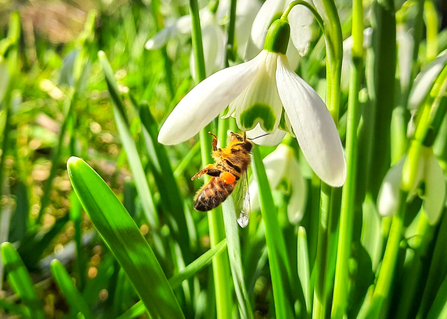
A bee visiting a snowdrop in an Oxfordshire churchyard. Picture: Pete Hughes
Starling murmuration by David Tipling/2020VISION

A bee visiting a snowdrop in an Oxfordshire churchyard. Picture: Pete Hughes
Drifts of snowdrops poking up through the woodland floor and along riverbanks are a welcome sight during these cold winter months. They generally flower between January and March and are a sure sign that spring will return. Look out for them at woodlands like our Warburg Nature Reserve near Henley.
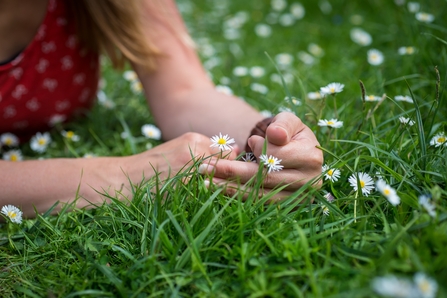
Can you spot a daisy in flower this month? These familiar flowers still bring a bit of cheer when you spot them flowering on a cold winter's day. Did you know each 'petal' is actually an individual flower as common daisies have composite flower heads, made up of lots of tiny flowers.
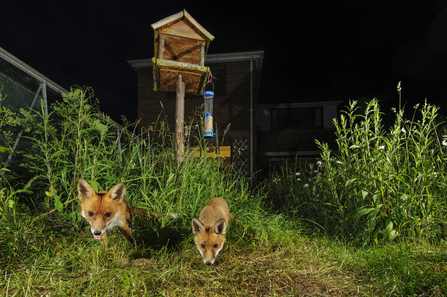
A pair of foxes in an urban garden. Picture: Terry Whittaker/2020Vision
Despite the cold, January is the peak of fox breeding season: this is a great time to look for foxes as they’re often out in the daytime in pairs, the dog following the vixen and waiting for her to become receptive. All this activity means this is also the peak time of year for dog fights as territorial rights are settled.
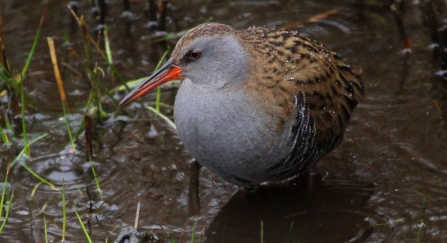
Water rail by Margaret Holland
Water rails are heard more frequently than seen as they skulk around in reedbeds and other wetland habitats looking for snails, insects and small fish to eat. Listen out for a ‘squealing pig’ in reeds and you're sure to be close to a water rail. Try wetland nature reserves like our Thatcham Reedbeds site near Newbury and Weston Turville Reservoir in Buckinghamshire.
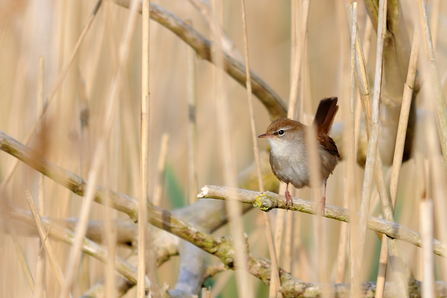
Another bird that skulks around in scrub close to water is the Cetti’s warbler. It can be tricky to see but loud bursts of song give away its location. Once you’ve heard a burst of insistent song, look for a small-medium sized dark, stocky bird with an upright tail flitting around dense bushes. Wetland reserves like our Hosehill Lake site near Reading are good places to look for these little birds.
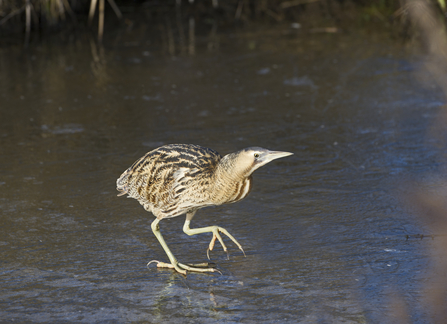
David Tipling
The last ‘hard-to-spot in the reeds’ bird on our list is a winter visitor in our three counties. Bitterns are herons that are well-camouflaged in amongst reeds with their streaky, buff and brown plumage. They’re often easiest to see when they fly over the reeds before descending down to hunt for fish. Look out for bitterns at our Weston Turville Reservoir and Calvert Jubilee reserves.
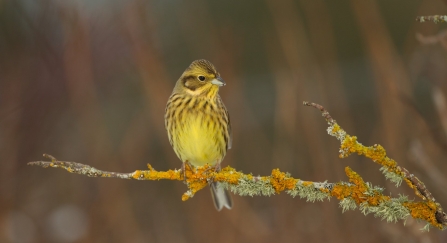
Yellowhammer by Mark Hamblin/2020VISION
This bunting used to be abundant in hedges and farms across the UK, however, populations have declined dramatically, more than halving since 1970. This is largely due to changes in farming practice. BBOWT is working with farmers to make ‘bird-friendly’ areas on their land, to restore and maintain the hedgerows that offer yellowhammers a home, and to grow crops that provide seeds in winter. Yellowhammers are usually recognised by the male’s bright yellow head, and distinctive, high-pitched song described by some as saying ‘a little bit of bread and no cheeeeeese’.
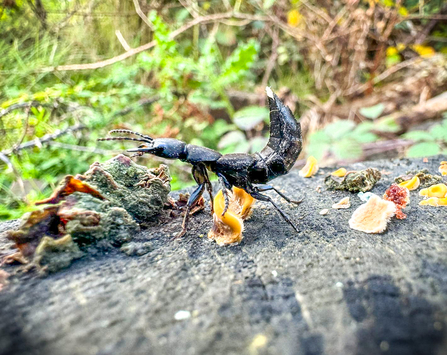
A devil's coach-horse beetle at BBOWT's Greenham Common nature reserve. Picture: Roger Stace
January is the month when you are least likely to see any insects or arachnids, but the charismatic devil’s coach-horse is a potential exception. These large black beetles are notorious for the defensive mechanism of raising their tails like a scorpion when threatened, they can also secrete a nasty smell. They are common in woods, gardens and hedgerows across our area, and are voracious predators of slugs and snails. Our land manager Roger Stace took the photo above at our Greenham Common reserve in Berkshire - a great place to see wildlife year-round.
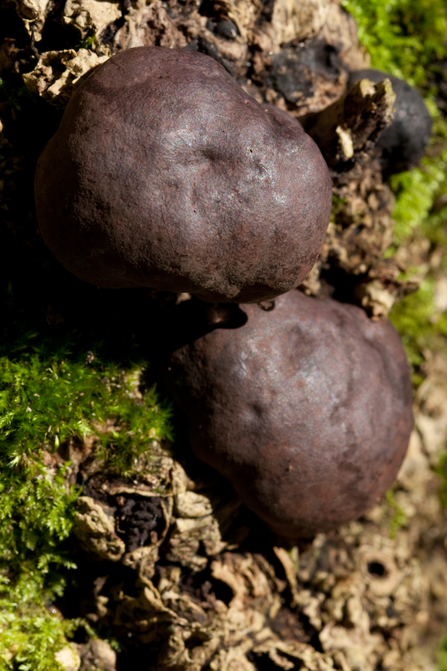
King Alfred's cakes fungus. Picture: Vaughn Matthews
The King Alfred's cakes fungus gets its name from the legend that King Alfred forgot to watch the cakes in the oven when hiding in a peasant's house. The cakes burnt and he scattered them through the woods to hide his mistake! Look out for the bulbous black fruiting bodies in broadleaf woodland, often on dead beech, ash and silver birch.
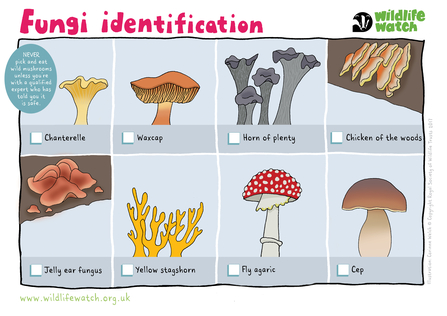
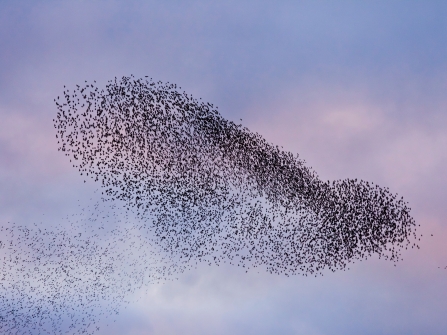
Starlings are beautiful birds when seen up-close, their iridescent feathers shining all colours of the rainbow as they sing their hugely varied and complex songs. However they are perhaps most famous for performing their huge, aerobatic murmurations, sometimes in their hundreds or thousands. Birds come together just before dusk to roost together. This is the best time of year to see the show, and our Thatcham Reedbeds nature reserve is a good place in the region to catch it.
Sign up below to receive the latest news from BBOWT, tips about how you can help wildlife, plus information on how you can get involved.